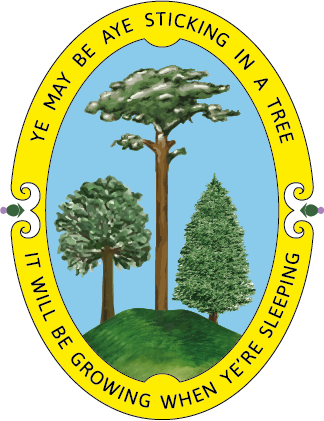As a landowner or farmer, engaging with the Countryside Stewardship scheme can significantly enhance your land's ecological value and aesthetic appeal while allowing you to be paid up to £22.97 per metre of planting!. The BN11 and BN7 grants are specifically designed to support hedgerows, offering crucial funding to help you improve your rural landscape through sustainable practices.
Understanding BN11 and BN7 Hedging Grants
The Countryside Stewardship scheme includes various grants, such as BN11 and BN7, that focus on hedging. These grants provide financial assistance for establishing new hedges (BN11) and gapping up of existing ones (BN7), which are essential for biodiversity, soil protection, and landscape enhancement.
Objectives of BN11 and BN7 Hedging Grants
1. BN11 - Planting New Hedges: The BN11 grant supports the planting of new hedgerows to create habitats for wildlife, reduce soil erosion, and enhance the visual appeal of the countryside. This grant covers costs associated with the purchase and planting of native hedgerow species. Currently this grant is offering £22.97 per m of hedge planted.
2. BN7 - Hedgerow Restoration and Management: The BN7 grant focuses on the restoration of existing hedgerows. This is focussed around gapping up of existing hedgerows so that they serve both a practical function and ensuring the continue to provide ecological benefits. Currently this grant is offering £17.22 per m of hedge planted.
The Benefits of Engaging with BN11 and BN7 Grants
.png)
Participating in the BN11 and BN7 grants through the Countryside Stewardship scheme offers several advantages:
1. Financial Support: Receive funding to offset the costs of planting new hedgerows or restoring and managing existing ones. This includes the purchase of plants, fencing/tree protection, and installation costs. Additional grants can be used if there are significant additional costs to prepare your land for planting.
2. Environmental Impact: Contribute to broader conservation efforts by enhancing wildlife habitats, improving soil health, and supporting sustainable agricultural practices.
3. Land Value Enhancement: Well-managed hedgerows can increase the value of your land by improving its environmental quality and attractiveness to future buyers or tenants.
How to Apply for BN11 and BN7 Hedging Grants
Applying for BN11 and BN7 grants under the Countryside Stewardship scheme involves several steps:
1. Eligibility Check: Ensure your land qualifies for these grants. Eligible lands include those used for agriculture or under environmental stewardship that need new hedgerows or replacing previously lost historic hedgerows.
2. Project Planning: For BN11, develop a plan for the location and species of new hedgerows. For BN7, outline your strategy for restoring existing hedgerows, detailing methods and sections to be gapped up.
3. Application Submission: Submit your application through the official Countryside Stewardship portal. Provide necessary documentation, including maps, project plans, and environmental impact assessments.
4. Review and Approval: Applications are reviewed based on alignment with the stewardship scheme's objectives. Approved projects receive funding to proceed with planting or restoration activities.
Essential Tips for a Successful Application
- Engage with Local Experts: Consult with local environmental or agricultural advisors to refine your project plan and align it with best practices for hedgerow management.
- Focus on Environmental Benefits: Emphasise how your hedgerow project will positively impact local wildlife, soil health, and landscape aesthetics.
- Compliance with Guidelines: Follow the specific guidelines for BN11 and BN7 grants to enhance your application’s chances of success.
- Use Local Species: For BN11, incorporate native plant species suited to the local climate and soil conditions. For BN7, ensure your restoration methods are appropriate for the existing hedgerow’s condition.
Additional Considerations for Landowners
.png)
Landowners looking to apply for BN11 or BN7 grants should consider the following:
- Community Involvement: Engage with local community groups or conservation organisations. Collaborative projects can increase the scope and impact of your hedging initiatives.
- Local Ecosystem Integration: Ensure your hedgerows complement existing natural features and land uses. This can enhance the ecological coherence and effectiveness of your conservation efforts.
- Long-Term Management: Plan for the long-term maintenance of your hedgerows, including periodic trimming, pest management, and replanting as necessary. Sustainable management is key to maximising the ecological benefits of your hedgerows.
Frequently Asked Questions (FAQ) About BN11 and BN7 Hedging Grants
How should I plant the new hedge?
To plant a new hedge under the BN11 grant, use the 'notch' planting technique for efficiency. This method involves making a narrow, vertical slit in the soil and placing the plant within it. Ensure you ‘heel-in’ tightly by pressing the soil around the roots with your foot, securing good soil-to-root contact for stability and healthy growth.
How should I protect the newly planted hedge?
For new hedges planted under the BN11 grant, protection from grazing animals is crucial. Fence off areas if you have sheep, cattle, or horses to prevent damage. If your land has issues with rabbits or hares, use spiral guards around the base of each plant. These guards deter pests while allowing the hedge to grow without obstruction.
Can these hedging grants be used with Countryside Stewardship Mid Tier, Higher Tier, and Capital Grants?
Yes, both BN11 and BN7 hedging grants can be utilised within the Countryside Stewardship Mid-Tier, Higher Tier, and Capital Grants. These grants are versatile and can be integrated into broader land management and conservation strategies within the scheme’s different tiers.
What are competitive weeds?
Competitive weeds like brambles, nettles, and grasses can hinder the growth of newly planted hedges by competing for moisture, nutrients, and light. Managing these weeds is essential to ensure your hedge receives the resources it needs to thrive. Regular weed control, including mechanical removal or the use of appropriate herbicides, can significantly improve the growth rate and health of your new hedge.
If you are interest in our countryside stewardship hedging packs you can buy one here or get in touch via email mattlowe@albatrees.co.uk











